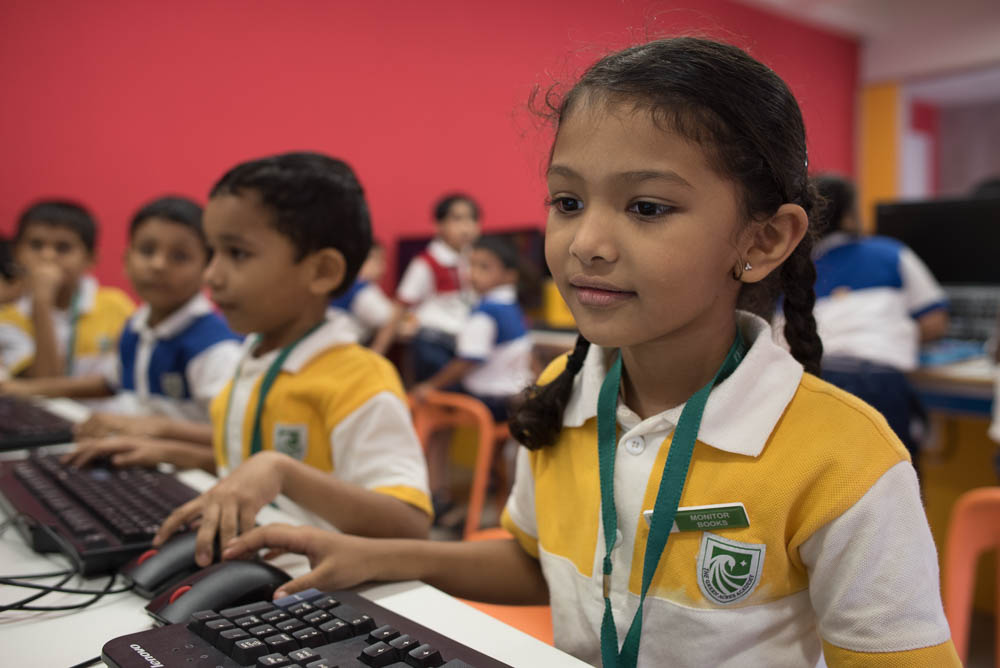A Quick Summary:
It is beyond the control of teachers to ensure how much every student in their class has understood what was taught in the lecture. Among 100+ students, if a few are rallying behind on the lesson, this is difficult for a teacher to keep track of. But when digital technology is incorporated in their lesson plans, students get the personal attention and tutoring they need.
Tests are a productive means to know how much knowledge a student has on the topics taught. But for teachers to hold such tests for a large class can be a mammoth task. This is where digital learning comes into play. After every lesson, students can simply solve tests digitally, and teachers can access their results on the same platforms. This saves valuable time for teachers, and they use it towards understanding students’ performance to assist them where they need improvement.
Students also receive instant feedback on their coursework, giving them more time to hone the topics they are falling behind on. Teachers don’t have to rely only on in-person engagements to know where their students stand now, with this more efficient digital option in place.
Our classrooms need to adapt with time. Traditional methods may have worked for earlier generations, but this new one needs the dynamic model of a digital learning environment. It focuses on learning and personalizes education for each student. Thereby, it saves time for the faculty as well as pupils, making way for the limited classroom time spent productively and wisely.
This blog was published here:
Scroll below to read the full piece.
With the COVID-19 crisis causing a nationwide lockdown rather drastically, schools and parents, both, found themselves in a unique position. They had to quickly adapt traditional classroom teaching methods to online schooling, to ensure that students did not lose out precious academic time and fall behind on their curriculum. Parents had to be more flexible and open with how they would accommodate the changes being implemented by schools and help facilitate online learning for their children. To correctly transfer to an online classroom, schools had to change the way the curriculum is rolled out.
Preparing
Simply translating the traditional classroom to a zoom or video classroom may not suffice as one cannot assume that all students have their own dedicated devices. In a lot of households, parents and children share devices. So, finding a balance for parents between their own work and their child’s education can prove tricky.
Teaching had to be designed in such a way that if a student is not able to sign on at the specific time, he/she should not lose out on the day’s teachings. Platforms like google classroom allow schools to put up instructional videos and assignments for students with timelines of completion. This gives students the ease to complete their assignments at any time of the day, and yet keep them on schedule.
Adapting
The next step in moving to online teaching would is to help teachers quickly adapt to the new technologies and formats which are to be used. Fortunately, lockdown took place just a few weeks shy of summer vacations, and this gave schools the opportunity to run professional development and teacher training programs to bring them up to speed.
Since the training programs for teachers would also have to be conducted online, teachers were put in the shoes of students, which gave them a first-hand understanding of how online classes are conducted, the possibilities and limitations of it, and how to best design lessons for the digital platform. Teachers learned what kinds of content might interest students, help keep them engaged, and what may not work. Their learnings were then applied to their curriculum planning for online classrooms.
Learning
The most important part of online schooling is to ensure that students were also understanding and learning the content which was put out every day. Online classrooms actually make this rather easy. More frequent milestones can be built into the online classroom, like small quizzes at the end of each lesson, or one at the end of each week.
Not only can students get immediate results, but they also have the answers at which point they can correct themselves. The results are also immediately provided to teachers, allowing them to assess on an individual level, how well a student is picking up a topic, or where he/she might need some assistance.
Preparing, adapting and learning are there for the three most important aspects of online learning, which all schools needed to quickly execute given the current global pandemic. And given the uncertainty of the future world, schools will have to put more resources into building online classrooms to ensure that the citizens of the future do face any interruptions in their education.
(This article is written by Rohan Parikh, Director of The Green Acres Academy for Franchise India here.)

